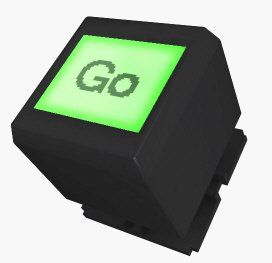sumotoy
Well-known member

I got several Screenkeys LC16 buttons from an auction in ebay for very cheap. These buttons have an LCD inside with multicolor background so I buildup a library for use several of this buttons without sacrifice pins from Teensy.
These buttons are really expensive but actually it's not rare find on ebay used video modules that uses a lot of them, probably because several studios have changed the serial standard.
Using this buttons it's not so easy, they need a constant clock (or they will destroy quickly) and protocol has some weird needs but they are cool so I find a way to reuse them by adding some hardware around to save MCU resources as much I can.
I was not able to find any working code for these buttons so I decided to wrote one for Teensy3 that it's the perfect MCU for these buttons, I was able to connect 64 without using too much resources and just 4 pin dedicated (not included MOSI,MISO and SCK that can be shared with other periferal).
I'm still developing this, prototype worked but was build up in a sketch to I used a library for easy integrate library with other projects and can be extended easily to other type of Screenkeys (like LC24 or full color ones), atually it works but not optimized.
I also created the Eagle component for these buttons and preparing some PCB for build up some projects.
On GitHub https://github.com/sumotoy/screenkeys
Thanks all and have fun!
Addendum:
Normally these buttons are mounted in serial video switcher that use a protocol based on RS485 but I cannot find any info, if someone here have some knoledge about these video serial protocols will be interesting for me know more about...
Last edited:

